Vivien Gornitz1402045514, 9781402045516
Table of contents :
Author IndexAAbbott, Mark B. 489Almasi, Peter F. 929Alverson, Keith 675Anderson, Lesleigh 489Andersson, Carin 609Andrews, John……Page 1
Acknowledgements……Page 2
9-Author Index……Page 0
Properties……Page 28
Albedo Feedbacks……Page 29
Alkenones……Page 31
Ancient Cultures and Climate Change……Page 33
Eastern Hemisphere……Page 34
Western hemisphere……Page 35
Bibliography……Page 36
Interpreting ancient climates……Page 37
Fossil assemblages as paleoenvironmental indicators……Page 38
Bibliography……Page 39
Nearest living relative……Page 40
Stable isotopes……Page 41
Bibliography……Page 42
AABW formation mechanisms……Page 43
AABW formation regions……Page 44
AABW property variability……Page 46
AABW and past climate change……Page 47
Bibliography……Page 48
Antarctic Cold Reversal……Page 49
Antarctic Glaciation History……Page 51
Bibliography……Page 56
Long records……Page 58
Bibliography……Page 60
The cool early earth: evidence from 4.40 to 4.00 Ga detrital zircons……Page 61
Timing of meteorite bombardment……Page 62
Oceans……Page 63
Bibliography……Page 64
Introduction……Page 65
The instrumental record of Arctic sea ice variations……Page 68
The Arctic ice cap, summer pack ice, and ice motion……Page 66
Sea ice and air temperature……Page 67
Sedimentary tracers of sea ice changes……Page 69
The Cenozoic development of Arctic sea ice……Page 70
Bibliography……Page 71
The nature of aridity……Page 72
Indicators of aridity……Page 73
Faunal and floral remains……Page 74
Pleistocene accentuation of aridity……Page 75
The climatic context of change……Page 76
Bibliography……Page 77
The astronomical theory of paleoclimates, an historical point of view……Page 78
Milankovitch debate……Page 79
Long-term variations of the astronomical parameters……Page 80
Daily irradiation……Page 81
Astronomical impact on climate……Page 82
Bibliography……Page 83
Extratropics……Page 84
Tropics/Subtropics……Page 86
Bibliography……Page 87
Atmospheric Evolution, Earth……Page 88
Greenhouse gases in the phanerozoic atmosphere (543 million years ago – present)……Page 89
Oxygen in the precambrian atmosphere (4400-543 million years ago)……Page 90
Oxygen in the phanerozoic atmosphere (543 million years ago – present)……Page 91
Bibliography……Page 92
The present-day atmosphere and surface environment……Page 93
Evidence for past liquid water from geomorphology……Page 94
Atmospheric origin……Page 96
Sputtering and nonthermal escape……Page 97
Inferences from noble gases and the isotopic composition of the atmosphere……Page 98
Bibliography……Page 101
Venus’ present day atmosphere……Page 102
Comparisons to Earth’s atmosphere……Page 105
Dry versus wet accretion of Venus……Page 106
Venus’ accretionary atmosphere……Page 107
Volcanic outgassing and climate change……Page 108
Bibliography……Page 109
Sedimentary characteristics of iron formations……Page 111
Temporal variation in stratigraphic and environmental patterns……Page 112
Implications for atmospheric history……Page 113
Bibliography……Page 114
Beachrock cementation: mineralogy and origin……Page 115
Beetles as Quaternary and Late Tertiary Climate Indicators……Page 116
Bibliography……Page 117
Applications……Page 118
Dating……Page 119
Binge-purge cycles and iceberg rafted debris……Page 120
Binge-purge cycles and climate change……Page 121
Effects of a global dust cloud……Page 122
Effects of the formation of NOx and acid rain……Page 123
Climatic changes from perturbations of biogeochemical cycles……Page 124
Bibliography……Page 125
Bio- and chronostratigraphy……Page 126
Recent developments……Page 127
Bibliography……Page 128
Theory……Page 129
Bibliography……Page 131
Structure of the carbon cycle……Page 133
Carbon on the primordial earth……Page 136
Running of the carbon cycle……Page 137
Main driving processes……Page 138
Carbon fluxes……Page 140
Carbon trends through time……Page 141
Atmospheric CO2……Page 142
Bibliography……Page 143
Analytical methods……Page 144
Variations of atmospheric CO2 and CH4 concentrations during the past 650,000 years……Page 145
The transition from the last glacial epoch to the Holocene……Page 146
The Holocene……Page 147
The last millennium……Page 148
Carbon Dioxide, Dissolved (Ocean)……Page 149
Buffering……Page 150
Distribution of ΣCO2 and TA……Page 151
[CO32minus] and CaCO3 saturation……Page 152
Bibliography……Page 153
Disequilibrium phenomena……Page 154
Post-depositional diagenetic overprint……Page 155
Isotopic evolution of seawater……Page 156
Bibliography……Page 158
Terrestrial environments……Page 159
Past and future……Page 161
Principles……Page 162
Pre-Quaternary history……Page 163
Distinctive characteristics……Page 164
Diagenesis……Page 166
Examples of cool-water carbonates though geologictime……Page 167
Bibliography……Page 168
What are warm-water carbonate sediments?……Page 169
Case studies of warm-water carbonate depositional environments; humid versus arid settings……Page 170
Summary……Page 172
Cenozoic delta18O records……Page 174
The greenhouse world……Page 176
The icehouse world of the last 33 million years……Page 177
Pleistocene oxygen isotope variations……Page 178
Some caveats……Page 180
Cirques……Page 181
The method……Page 182
Introduction……Page 184
The CLIMAP project……Page 185
Bibliography……Page 189
CLIMATE CHANGE, CAUSES……Page 190
Tectonic timescale……Page 192
Glacial-interglacial timescale……Page 194
Centennial-millennial timescale……Page 197
Bibliography……Page 199
Geological scale climate forcings……Page 200
Radiative nature of climate forcings……Page 202
Approaches to estimating past changes……Page 204
Climate history of the past 1,000 years……Page 205
Introduction……Page 207
Climate and peat/coal formation……Page 208
Relative sea-level history……Page 209
Physical processes……Page 210
Influence of climate……Page 212
COCCOLITHS……Page 213
Introduction……Page 214
Key methods, findings and new concepts……Page 215
Conclusions……Page 217
Continental depositional systems and paleoclimate……Page 218
Specific lithological indicators of climate found in continental sediments……Page 221
Bibliography……Page 223
Paleozoic corals……Page 224
Paleozoic coral reefs……Page 225
Mesozoic and Cenozoic corals……Page 226
Mesozoic and Cenozoic coral reefs……Page 229
Types of reefs……Page 230
Cordilleran Ice Sheet……Page 232
Growth and decay of Cordilleran Ice Sheet……Page 233
Ice sheet glaciation and sea-level change……Page 236
Sources and sinks……Page 237
Introduction……Page 239
Atmosphere……Page 240
Oceans……Page 241
Bibliography……Page 242
Introduction……Page 243
Impact-related climatic effects……Page 245
Bibliography……Page 246
Current distribution of ice in the cryosphere……Page 247
Current evolution of the cryosphere……Page 249
The cryosphere during the last glacial cycle……Page 250
The cryosphere before the last glacial cycle……Page 251
Cyclic Sedimentation (Cyclothem)……Page 252
Bibliography……Page 253
History……Page 255
Dansgaard-Oeschger cycles in ocean sediment cores……Page 256
The trigger of Dansgaard-Oeschger events/cycles……Page 257
Bibliography……Page 258
Dating, Amino Acid Geochronology……Page 259
Racemization of amino acids in fossils……Page 260
Absolute age and paleothermometry……Page 261
Conclusions……Page 262
Terms and basic data……Page 263
Biozones……Page 264
Introduction……Page 265
The annual growth ring……Page 266
Factors affecting tree growth……Page 267
A conceptual model for tree growth……Page 268
Estimating the mean value function……Page 270
Retaining low frequency variance……Page 271
Bibliography……Page 272
Dating, Fission-Tracks……Page 273
Concepts……Page 275
Historical development……Page 276
Bibliography……Page 277
The geomagnetic polarity time scale……Page 278
Applications……Page 280
General principles……Page 281
Long-lived systems……Page 282
What does an “age” mean?……Page 283
Mass analyzers……Page 284
Analysis and interpretation techniques……Page 285
Origin……Page 286
Geology in the 1960s and the Deep Sea Drilling project proposal……Page 287
The initial phase of DSDP……Page 288
The international program of ocean drilling (IPOD)……Page 289
Influences of climate on deltas……Page 291
Climatic signals in deltas……Page 292
Rhine-Meuse delta (north-central Europe)……Page 293
Bibliography……Page 294
Describing tree-growth/climate relationships……Page 295
Reconstructing climate……Page 296
Verification of results……Page 297
Reconstructions of climate from tree rings……Page 299
Bibliography……Page 300
Desert Varnish as a Paleoclimate Proxy……Page 301
Bibliography……Page 303
Diamicton……Page 304
Diatoms……Page 305
The ecology of dinoflagellates……Page 306
Dinocysts in paleoecology, paleoceanography and paleoclimatology……Page 307
Dole Effect……Page 308
Bibliography……Page 309
Duricrusts……Page 310
Bibliography……Page 311
Ice cores……Page 312
Causes of increased glacial dustiness……Page 313
Effects of increased glacial dust……Page 314
Bibliography……Page 315
Atmospheric and oceanic composition……Page 317
Early Ordovician……Page 318
Bibliography……Page 319
The Sun……Page 320
QBO and sunspot cycles……Page 321
Plate tectonics and paleogeography……Page 322
Asymmetry of North Magnetic Pole – consequences……Page 323
Glacial environments……Page 324
Conclusions……Page 325
Bibliography……Page 326
Eccentricity……Page 327
Eemian (Sangamonian) Interglacial……Page 328
Insolation and climate response……Page 329
Marine environments……Page 330
Terrestrial environments……Page 331
Bibliography……Page 333
Sources of atmospheric dust……Page 334
Long-term changes in dust deposition……Page 335
Provenance studies……Page 337
Introduction……Page 338
Eolian sand……Page 339
Loess……Page 340
Effects of dust on climate……Page 343
Bibliography……Page 344
Eolianite……Page 345
Eskers……Page 346
General features……Page 347
Supratidal evaporites: sabkhas……Page 348
Evaporites through time and space……Page 349
Evaporite geochemistry……Page 350
Long-term trends……Page 351
Microevolution……Page 352
Macroevolution……Page 353
Precambrian……Page 354
Bibliography……Page 356
Faint Young Sun Paradox……Page 358
Bibliography……Page 359
Lakagigar, Iceland, 1783……Page 360
Flood basalts and mass extinctions……Page 361
Bibliography……Page 362
Applications in paleoclimatology……Page 363
Bibliography……Page 364
Significance of geochemical proxies……Page 365
Preservation of the organic signal……Page 366
Analysis of bulk organic matter……Page 367
Inorganic nutrient indicators……Page 368
Inorganic temperature indicators……Page 369
Alkenones……Page 371
Pigments……Page 374
Techniques……Page 375
Bibliography……Page 376
Introduction……Page 378
Methods for estimating glacial eustasy……Page 379
Pre-Pliocene glacial-eustatic changes……Page 380
The Paleozoic era……Page 382
Bibliography……Page 383
Extent of glaciation at present and in the past……Page 385
The Earth as a “Glacial Planet”……Page 386
Glacial landscapes – today……Page 387
Glacial erosion – processes, landforms, and landscape systems……Page 388
Processes……Page 389
Landscape systems……Page 390
Glacial deposition: processes, landforms, and landscape systems……Page 392
Landforms……Page 393
The impact of glaciation beyond ice limits……Page 396
Glacial Isostasy……Page 398
Intermontane, ice-dammed megalakes……Page 404
Central Asian paleolakes……Page 405
Glacial Sediments……Page 406
Bibliography……Page 407
Erosional/deformation features……Page 408
Neoproterozoic……Page 409
Conclusion……Page 411
Bibliography……Page 412
Ice cores……Page 413
The last glacial cycle……Page 414
Internal dynamics: greenhouse gases……Page 415
Other climate system influences……Page 416
Bibliography……Page 417
Bibliography……Page 418
Diamictons……Page 419
Glendonite/Ikaite*……Page 420
Definition and origins of the term “greenhouse”……Page 421
The greenhouse effect and the climate system……Page 422
Early Earth……Page 423
Late Silurian to Early Carboniferous periods……Page 425
Summary……Page 426
Bibliography……Page 427
Heat Transport, Oceanic and Atmospheric……Page 430
Provenance……Page 432
Precursor events……Page 434
Processes that may produce Heinrich layers……Page 435
Bibliography……Page 436
Earliest observations……Page 437
Idea of climate cycles……Page 438
The glacial theory……Page 440
Pre-Quaternary ice ages……Page 441
Orbital variations……Page 442
Plate tectonics and redistribution of continents and oceans……Page 443
Mountain uplift and terrestrial cooling……Page 444
Changes in atmospheric composition……Page 445
The Moon, luni-solar tides and related solar, planetary and terrestrial cycles……Page 446
Loess and paleosols……Page 447
Lake levels and fluvial indicators……Page 448
Bibliography……Page 449
Arrhenius, Svante August (1859-1927)……Page 451
Daly, Reginald Aldworth (1871-1957)……Page 452
Esmark, Jens (1762-1829)……Page 453
Galileo Galilei (1564-1642)……Page 454
Huntington, Ellsworth (1876-1947)……Page 455
Pettersson, Otto (Sven Otto) (1848-1941)……Page 456
Shackleton, Nicholas J. (1937-2006)……Page 457
Von Richthofen, Baron Ferdinand (1833-1905)……Page 458
Bibliography……Page 459
Data sources……Page 461
The early Holocene climatic optimum……Page 462
Late Holocene climatic variability……Page 463
Bibliography……Page 464
Reconstructing treeline fluctuations……Page 465
Holocene treeline dynamics……Page 466
Linking the past to the future……Page 468
Introduction……Page 469
Hominin family tree……Page 470
Evolution of hominin traits……Page 471
Evolution and climate……Page 472
Bibliography……Page 473
Hypsithermal……Page 474
Bibliography……Page 475
Establishing an ice core chronology……Page 476
Antarctic and Greenland ice core: an archive of the atmospheric composition and climate……Page 478
Bibliography……Page 479
Climatic and environmental information from mountain ice cores……Page 480
The significance of climate records from mountain glaciers……Page 482
Future priorities……Page 484
Bibliography……Page 485
“Icehouse” (Cold) Climates……Page 486
Carbon dioxide in atmosphere is lower……Page 487
Reduced pelagic diversity……Page 488
Plate tectonic causation……Page 489
Cap carbonates……Page 490
Late Ordovician and Early Silurian glaciations……Page 491
Late Paleozoic ice age……Page 492
Bibliography……Page 493
Introduction……Page 494
Paleoenvironmental significance……Page 495
Legacy programs……Page 496
The Initial Science Plan for IODP……Page 497
Expeditions……Page 498
Deepwater Gulf of Mexico……Page 499
Definitions……Page 500
Iron and Climate Change……Page 501
History……Page 502
Equilibrium isotope fractionation……Page 503
Bibliography……Page 504
Kettles……Page 505
Bibliography……Page 506
Formation of lacustrine sediments……Page 507
Organic lacustrine sediments……Page 508
Dating……Page 509
Bibliography……Page 510
Lake-level reconstructions……Page 511
Case study: Lake Titicaca, Bolivia/Peru……Page 512
Bibliography……Page 514
Ice sheet reconstructions……Page 515
Bibliography……Page 516
The sequence of events during the Last Glacial Termination……Page 517
Introduction……Page 520
Mississippian paleoclimate……Page 521
Late Mississippian-Permian glaciation (Glacial II and III) and paleoclimate……Page 522
Summary……Page 524
Bibliography……Page 525
Cordilleran……Page 526
Central Asian uplands……Page 527
Bibliography……Page 528
Methods……Page 529
Paleovegetation simulation……Page 530
Vegetation history……Page 531
The Last Glacial Maximum……Page 532
The mid-Holocene……Page 534
Bibliography……Page 535
Historical background and definitions……Page 536
Characteristic properties……Page 537
Wider importance……Page 538
Laurentide Ice Sheet……Page 539
Wisconsinan history……Page 540
Evidence……Page 542
Regional climate change……Page 543
Definition……Page 544
Origin……Page 545
Bibliography……Page 546
Shallow-water carbonate deposits……Page 547
Deep-sea carbonate deposits……Page 548
Ocean and climate history……Page 550
Bibliography……Page 554
Introduction……Page 555
Partioning of carbonate species in seawater……Page 556
The biological pump……Page 557
CaCO3 compensation and the pH of the ocean……Page 559
Bibliography……Page 560
Kaolinite group……Page 561
Mars is a volcanic planet……Page 562
A cold, dry Mars……Page 563
What is not found……Page 564
Meridiani – a locally wet Mars……Page 565
Modern snow and ice……Page 566
Summary – and where to look next……Page 567
Bibliography……Page 568
Introduction……Page 569
Catastrophic climatic cooling……Page 570
Summary and conclusions……Page 571
Maunder Minimum……Page 572
Medieval Warm Period……Page 573
Summary……Page 575
Introduction……Page 576
Early Mesozoic Pangean climates……Page 577
The climate of disintegrating Pangea……Page 578
Bibliography……Page 580
Bibliography……Page 581
Chemistry and theoretical occurrence……Page 582
Natural distribution and composition……Page 583
A dynamic view and a large capacitor……Page 584
Potential climatic effects of seafloor methane release……Page 585
Methane venting in the Quaternary……Page 586
Bibliography……Page 587
Mid-Pliocene Warming……Page 588
Middle Pliocene warming and estimates of future climate change……Page 589
Introduction……Page 590
Persistent multi-century to millennial cycles……Page 591
Global distribution of millennial variations……Page 592
The enigmatic 1,470-year cycle……Page 593
Bibliography……Page 594
Introduction……Page 595
Hematite……Page 596
Aluminum oxides and oxyhydroxides……Page 597
Halite……Page 598
Calcite, aragonite, and dolomite……Page 599
Siderite……Page 600
Phosphates……Page 601
Clay minerals……Page 602
Bibliography……Page 604
Megamonsoon of the megacontinent……Page 605
Establishment of the modern monsoon system……Page 608
Geological records……Page 609
Bibliography……Page 610
Monsoon systems……Page 611
Centennial to millennial-scale changes and forcing mechanisms……Page 612
Bibliography……Page 615
Bibliography……Page 616
Mountain Glaciers……Page 617
Orographic precipitation……Page 618
Air mass trajectories……Page 619
Plateau growth and monsoons……Page 620
What drives surface uplift of mountain ranges?……Page 621
The erosional system……Page 622
Climatic impacts on the geomorphic system and mountain topography……Page 623
Steady-state orogens, topography, and climate……Page 625
Summary……Page 626
Bibliography……Page 627
Qualitative techniques……Page 628
Summary……Page 629
The Miocene……Page 630
The Pliocene……Page 631
Onset of Northern Hemisphere Glaciation……Page 632
Introduction……Page 633
Conclusion……Page 634
Modern North Atlantic deep water……Page 635
Last Glacial Maximum……Page 636
Dansgaard-Oeschger cycles and Heinrich events……Page 637
Earlier Cenozoic history……Page 638
Bibliography……Page 639
Definitions……Page 640
Significance……Page 641
Paleorecords……Page 642
Predictability……Page 643
Bibliography……Page 644
Ocean Anoxic Events……Page 646
Organic carbon burial processes……Page 647
Bibliography……Page 648
History……Page 650
ODP contributions to Earth science……Page 651
Climate change……Page 652
Architecture of planet Earth……Page 653
ODP technology……Page 654
Introduction……Page 655
Proxies for water mass identification……Page 656
Cd/Ca, Ba/Ca and Zn/Ca ratios in benthic foraminifera or deep-sea corals……Page 657
14C ages of 230Th-dated deep-sea corals……Page 659
231Pa/ 230Th in Atlantic sediments……Page 660
Changes in the distribution of deep-water masses……Page 661
Changes in the rate of formation of deepwater masses……Page 662
Conclusion……Page 663
Ocean Paleoproductivity……Page 664
Reconstruction of productivity from organic matter orphosphorus in sediments……Page 665
Reconstruction of productivity from barite and Ba accumulation……Page 666
Reconstruction of productivity from microfossil assemblages……Page 667
Reconstruction of productivity from carbon isotope records……Page 668
Reconstruction of productivity from nutrient content……Page 669
Bibliography……Page 670
History……Page 672
Transfer functions based on microfossil species assemblages……Page 673
Oxygen isotopes……Page 675
Magnesium-calcium ratio……Page 676
Long-chain alkenones……Page 677
Summary……Page 678
Bibliography……Page 679
delta15N values……Page 680
Fatty acids……Page 681
Pigments……Page 682
Bibliography……Page 683
Application to paleoclimatology and paleoenvironments……Page 684
Outwash Plains……Page 686
Atmospheric fractionation and local temperature control of the isotopic composition……Page 687
Precipitation and the isotopic thermometer……Page 688
The marine delta18O signal: temperature and ice volume……Page 690
Bibliography……Page 693
Focus 1 – PANASH……Page 695
Focus 3 – IMAGES……Page 696
Outreach, communication, and publications……Page 697
Bibliography……Page 698
Nearest-living-relative technique……Page 699
Plant structure proxies……Page 700
Wood……Page 701
Chemical signatures……Page 702
Introduction……Page 703
Setting up deep paleocean model experiments……Page 704
Predictions of paleocean modeling……Page 705
Deep water formation and MOC……Page 706
Some lessons learned……Page 707
Bibliography……Page 708
Reconstructions (Proxy Data)……Page 710
Reconstructions (Models)……Page 711
Processes……Page 712
Ocean basin changes……Page 713
Conclusion……Page 714
Bibliography……Page 715
Background……Page 716
Characterization of the PETM event……Page 717
Modeling……Page 718
Bibliography……Page 719
Methodology……Page 720
Paleoclimate modeling contributions……Page 721
Bibliography……Page 726
Introduction……Page 729
Model descriptions and evolution……Page 730
Historical development of Quaternary modeling……Page 731
The current state-of-the-art……Page 734
Bibliography……Page 735
Lithological/mineralogical indicators……Page 736
Geochemical indicators……Page 738
Paleontological indicators……Page 739
Bibliography……Page 740
Introduction……Page 741
Low-resolution records……Page 742
High-resolution records……Page 743
Mid-Holocene onset……Page 744
The last millennium……Page 745
Bibliography……Page 747
Introduction……Page 748
The Paleocene to early Eeocene “greenhouse” world……Page 749
The Eocene climatic deterioration and the “doubthouse”……Page 750
The Oligocene……Page 751
Bibliography……Page 752
Introduction……Page 753
Archives and proxies (Stage 1)……Page 754
Time-series analyses, hydrological modeling (Stage 4)……Page 755
Water resource implications and hydrological risk-assessment……Page 756
Conclusions……Page 757
Principles, assumptions, and chronologies……Page 758
Paleolimnology and climate change……Page 761
Bibliography……Page 762
Paleo-Ocean pH……Page 763
Lacustrine indicators of paleo-precipitation……Page 766
Bibliography……Page 767
Paleosol features……Page 768
Paleosols as paleoclimate proxies research……Page 770
Bibliography……Page 771
Paleosols as a chronostratigraphic component ofthePleistocene……Page 772
Analytical methods for studying the mineral components of soils……Page 773
Evolution of soil formation processes in the Quaternary and their climatic interpretation (based on the example of the central East European Plain)……Page 774
Introduction……Page 777
Tree rings……Page 778
Ice core studies of ice sheets and glaciers……Page 779
Speleothems and precipitated calcite……Page 780
Lake records of temperature……Page 781
Bibliography……Page 782
Introduction……Page 783
Storm-induced deposits……Page 784
Bibliography……Page 785
Palynology……Page 786
Patterned Ground……Page 788
Permafrost in polar and middle latitude regions……Page 790
Thermal cracking……Page 791
Permafrost creep and rock glacier……Page 792
Thermokarst……Page 793
Bibliography……Page 794
Mineralogy and petrology……Page 795
Trace elements……Page 797
Origin and paleoclimatology……Page 798
Bibliography……Page 799
Phosphorus cycling in soils……Page 800
Marine sedimentation……Page 801
Examples of the lake history approach to terrestrial P cycling……Page 802
Pingos……Page 803
Shifting continents……Page 804
Albedo and thermal properties of land and sea……Page 805
Continentality……Page 806
Ocean heat transport……Page 809
Tethys Ocean……Page 810
Central American passage and Indonesian Seaway……Page 811
Mountains, high plateaus, and atmospheric planetary waves……Page 812
Rain shadows……Page 813
Volcanism and large igneous provinces……Page 814
Bibliography……Page 815
History……Page 818
Orbital cycles……Page 820
Millennial cycles……Page 821
Bibliography……Page 823
Ice sheets……Page 824
Climate modeling – surface temperature ( C)……Page 825
Climate modeling – wind (m s–1) and surface pressure (hPa)……Page 826
Climate modeling summary……Page 828
Ocean heat transport……Page 829
Ocean heat transport – difficulties……Page 830
Summary……Page 831
Bibliography……Page 832
Objectives and project design……Page 833
Results……Page 834
Early history……Page 835
Pollen production and dispersal……Page 836
Field sites……Page 837
Laboratory techniques……Page 838
The pollen record……Page 839
Conclusions: examples of pollen records……Page 842
General principles……Page 843
Ar-Ar or the 40Ar/39Ar method……Page 844
Bibliography……Page 845
Timescales……Page 846
Neogene……Page 850
Paleozoic……Page 851
Precambrian……Page 852
Bibliography……Page 853
Bibliography……Page 855
Proterozoic glaciations……Page 856
The Neoproterozoic climatic convulsions……Page 857
Bibliography……Page 858
Modes of climate change……Page 860
Heralding the start of the Quaternary period……Page 862
Intensification of the Walker circulation……Page 863
Feedback mechanisms……Page 864
Debunking the eccentricity myth?……Page 866
Dansgaard-Oeschger cycles……Page 867
Possible causes of the Heinrich events and Dansgaard-Oeschger cycles……Page 868
The nature of the LGIT……Page 869
Possible causes of abrupt climate oscillations during the LGIT……Page 871
Conclusions……Page 872
Bibliography……Page 873
Plio-Pleistocene transition to the last glacial maximum (ca. 2.5 million to 21,000 yBP)……Page 875
Deglaciation (14,000–8,000 yBP)……Page 877
Bibliography……Page 879
Radiocarbon dating model……Page 881
Holocene de Vries effects……Page 883
Accelerator mass spectrometry……Page 884
Applications……Page 885
Bibliography……Page 886
Radiolaria……Page 887
Paleosols in red bed sequences……Page 889
Bibliography……Page 890
Bibliography……Page 891
Sapropels……Page 892
Bibliography……Page 893
The last ice age – the Weichselian……Page 894
Pre-Quaternary sea level change……Page 896
The New Jersey sea level transect……Page 897
Causes of sea level change……Page 901
Bibliography……Page 903
Processes affecting sea level……Page 904
Sea level rise after the last glaciation……Page 905
Middle to late Holocene sea level……Page 907
Summary and conclusions……Page 908
Bibliography……Page 909
Observational evidence……Page 910
Raw separation of uniform uplift or subsidence……Page 911
Oxygen isotopes and long sea level records……Page 913
Bibliography……Page 915
Instrumental records……Page 916
Marine terraces……Page 917
Archaeological evidence……Page 918
Sedimentary features directly reflecting climatic conditions……Page 919
Sedimentary features that indirectly reflect climate change……Page 920
Conclusion……Page 922
Bibliography……Page 923
The evidence……Page 924
Evidence of seasonality at low paleolatitudes……Page 925
Rapid onset and demise of snowball glaciations……Page 926
Bibliography……Page 927
The SPECMAP astronomically derived timescale……Page 928
Analyzing the Ice Age record within the framework of the SPECMAP time scale……Page 930
Bibliography……Page 932
Growth layering in speleothems……Page 933
Bibliography……Page 934
Standards……Page 935
Stable isotopes in paleothermometry……Page 936
Stable isotope ratios in meteoric water……Page 937
Evaporation/precipitation ratios……Page 938
Carbon isotopes of organic matter……Page 939
Strontium isotope systematics……Page 940
Strontium isotopic evolution of seawater……Page 941
Sulfur isotope systematics……Page 943
Sulfur isotopic evolution of seawater……Page 944
Multiple sulfur isotopic evidence for an atmospheric impact on the early sulfur cycle……Page 945
Introduction……Page 946
Solar magnetic activity and the geomagnetic field……Page 947
Correlations between solar variability and climate……Page 948
Paleoclimate and solar variability……Page 949
Amplification of solar influence……Page 950
Bibliography……Page 951
Characterization……Page 953
Overview……Page 954
Geology of the flood……Page 955
Ice cores and important records of the 8.2 kyr event……Page 956
Summary……Page 957
Bibliography……Page 958
Definition……Page 959
Locations of deep water formation……Page 960
Hysteresis behavior of the MOC……Page 961
The meridional overturning circulation and Quaternary climate change……Page 962
Tills and Tillites……Page 964
Theoretical quantities……Page 965
Estimating the spectrum……Page 966
Notes on the harmonic F–test……Page 968
The Crame´r–Rao bound……Page 969
Coherence……Page 970
Nonstationarity and Holocene data……Page 972
Summary and Recommendations……Page 974
Introduction……Page 975
How accurate are the reconstructions?……Page 976
Rock and fossil record……Page 978
Quantitative paleoclimatic proxies……Page 981
Causes of Triassic and Jurassic global paleoclimatic variation……Page 982
Bibliography……Page 983
Principle of radiometric dating……Page 985
Application of U-series dating……Page 986
Bibliography……Page 987
Varved-clay chronology……Page 988
Bibliography……Page 990
Aerosol chemistry and physics……Page 991
Movements of volcanic aerosol veils……Page 992
Climatic effects (specific eruptions)……Page 993
Bibliography……Page 994
Weathering and Climate……Page 995
Interpretation of paleoclimate from paleoweathering studies……Page 996
Influence of weathering processes on atmospheric pCO2……Page 997
Long term changes in global weathering rates: Sr isotope evidence……Page 998
Bibliography……Page 999
Introduction……Page 1000
The Wisconsinan Glaciation and the marine isotope and sea level records……Page 1001
Onset of glaciation in North America……Page 1002
The elusive Middle Wisconsinan……Page 1003
The concept of the Late Glacial Maximum (LGM) – is it useful?……Page 1004
Bibliography……Page 1005
North America……Page 1007
Marine evidence……Page 1008
Bibliography……Page 1009
back-matter……Page 1010
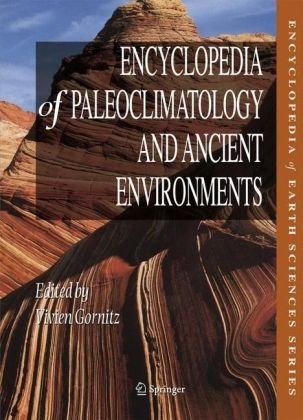
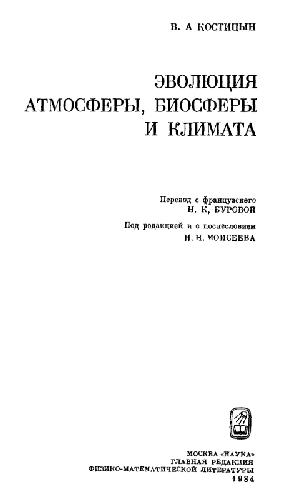
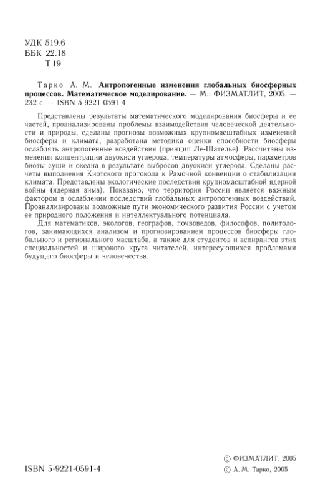
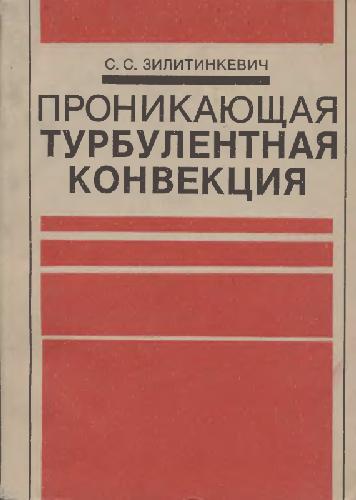
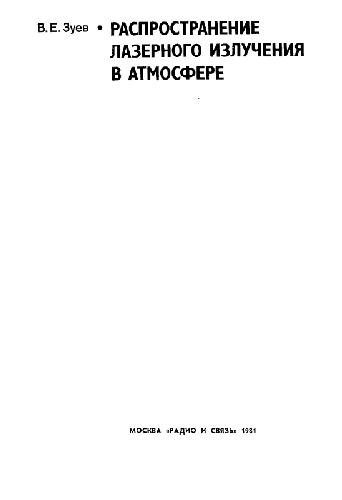

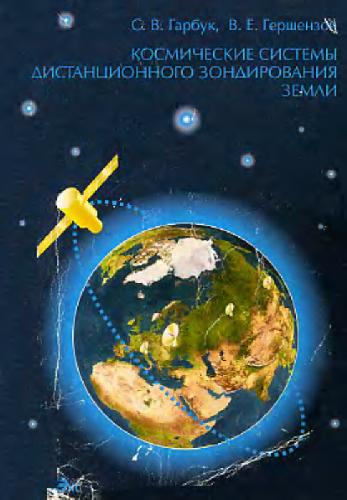
Reviews
There are no reviews yet.